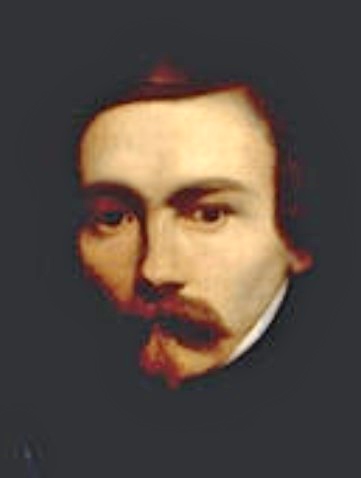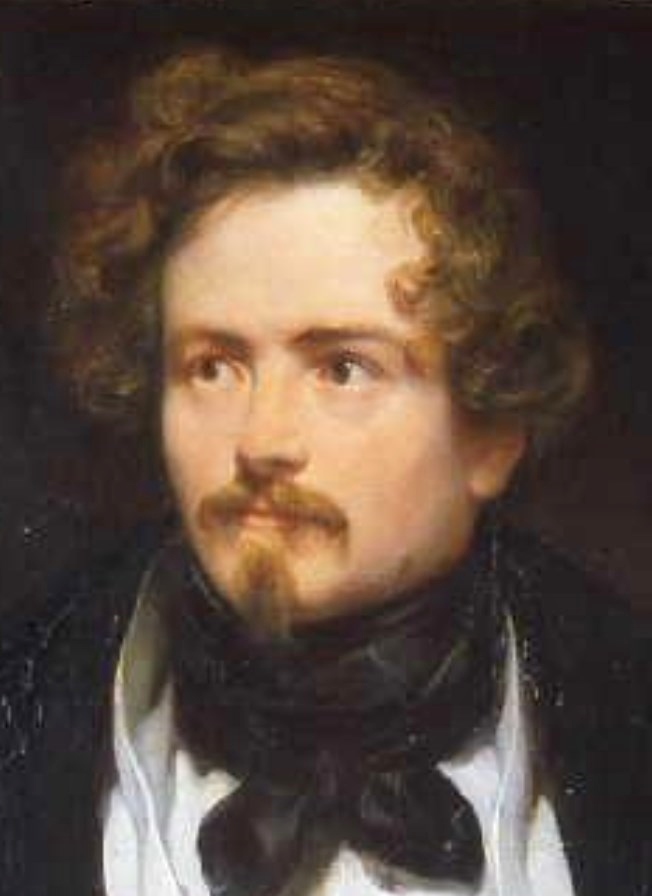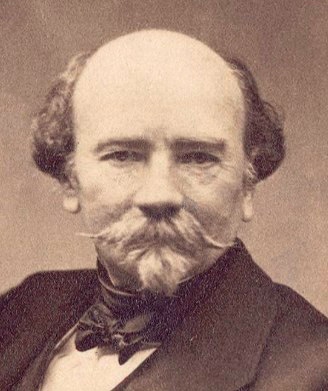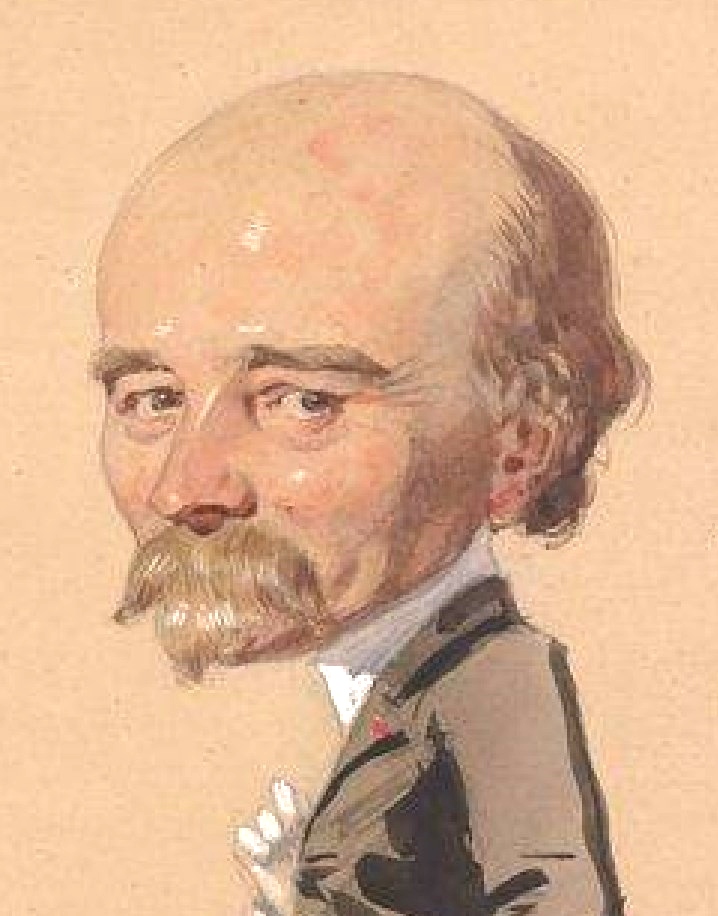Eugène-Emmanuel-Amaury Pineu Duval (Amaury Duval) (1808 -1885), painter
1st image: Soirée; 2nd: autoportrait (1832); 3rd: by Eugène Dévèria (1843); 4th: by Nadar (1864); 5th: caricature by Eugène Giraud drawn 26 February 1864 at Nieuwerkerke's salon; Video. (Alternative: Barbet)
Backed by his father, member of the beaux-arts division of l’Institut, the talented Amaury Duval was accepted at the age of seventeen by Ingres39, as one of his first students. Flandrin79 was another one. Trained and influenced by Le Maître, Duval was sent by King Charles X with an expedition to Greece to depict ancient archeology. His interest in Greek art and Italian Renaissance is visible in his neo-classical works, many of which were accepted at Parisian Salons from 1833 to 1868. Together with other rising stars: Delacroix10, de Musset73, Henriquel-Dupont51, Pradier03, and Liszt50b, Amaury frequented the home of painter Eugène Déveria. Good friends Amaury and Eugène shared the same pointy beard that was considered scandalous in those days. Amaury was the cousin of Regnault50a, of whom he painted a portrait.
It shows the close ties of the artist community in those days, supported by de Nieuwerkerke's16 vendredi-soirées.
Ingres wasn’t an easy mentor: students had to blindly comply with his dogmatic view on art, or leave. This prevented most of Ingres’ student to create their own style, becoming merely copyists. Amaury Duval, Ingres' ‘clumsy disciple’ is considered an exception to this rule. Today, his paintings seldom reach the public; the most recent exhibition of his work was in 1974, but his name perpetuates because of his book L’Atelier d’Ingres (1878). Not only does the book provide anecdotes about Ingres and his school, it also sets a path toward reformation of the Art Salons. About Ingres, Amaury states: the biggest painters are the worst teachers.
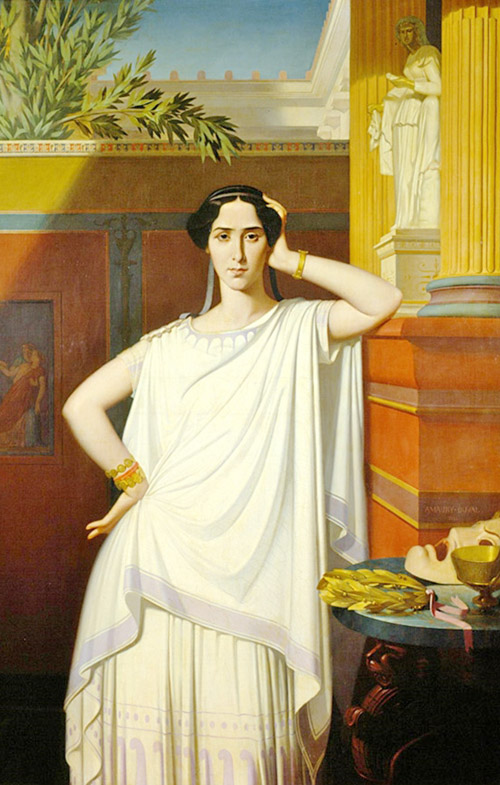
The intelligent and soft-natured Amaury wasn’t part of the usual vendredi-soirée aristocratic entourage, so why is he in Une Soirée au Louvre?
This must have been de Nieuwerkerke's idea: Together with architect Lassus62, Amaury was appointed by the State to decorate, among others, the Notre-Dame Cathedral of Chartres (1838) and the church of Saint-Germain-en-Laye (1848 - 1853). His wet buon-fresco paintings are renowned contributions to religious art in the 19th century. Duval and Lassus likely presented their efforts at one of the soirées in 1853.
It could also have been Amaury's 1854 painting of La Tragédie, commissioned by the State (de Nieuwerkerke), depicting famous actress Rachel Félix81 in a Greek landscape. It was displayed at the Salon 1855 but was never paid.
Rachel, darling of the Parisian cultural scene with her stunning performances of Greek tragedies, performed on several of de Nieuwerkerke's soirées. Not only was she a mistress of emperor Napoleon III but of several other high-placed men, some of which are depicted in this painting. This was the reason for eliminating her, in 1854, from the initial version. Amaury may have attended one or more vendredi-soirées where she performed.
Absorbed in his painting, Amaury Duval lacked the ability to sell his works at their true value. It was only in the 1860s that he acquired some wealth —partly from his fresco decorations, but primarily through an inheritance received by his sister.
He withdrew from Parisian life in the 1870s, spending his summers on the west coast of France (Vendée) at the Château de Linières.
He passed away on Christmas Day in 1885, just two months after publishing a second volume of Souvenirs (his first being a book on Ingres’s atelier).

